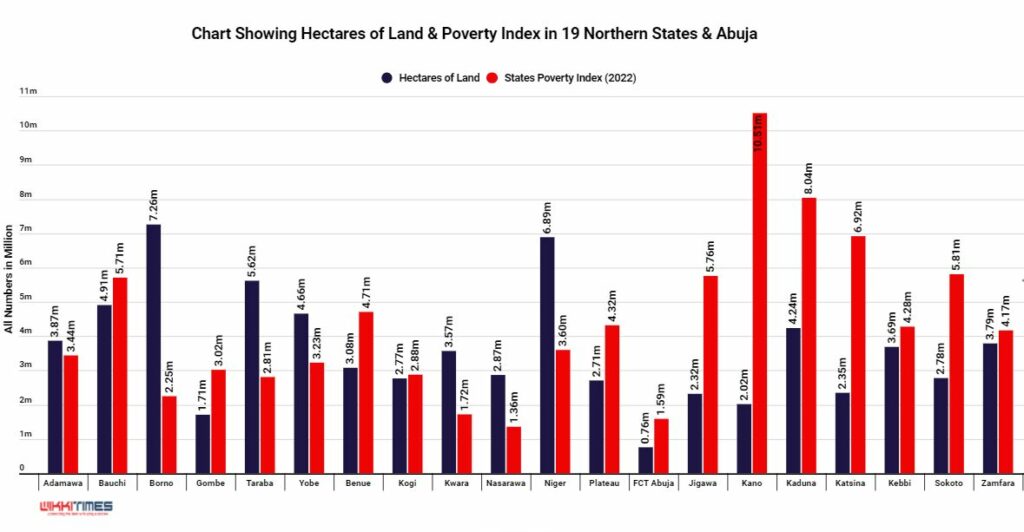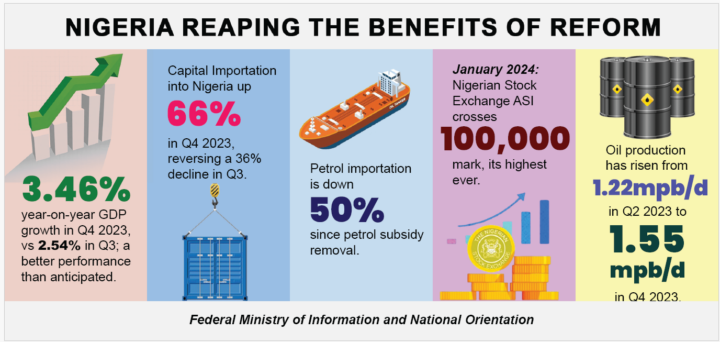The Multidimensional Poverty Index (MPI) 2022 by the National Bureau of Statistics (NBS) 2022 has shown that 86.13 Million Poor Nigerians Live in the North including the Federal Capital Territory (FCT) Abuja.
Out of Nigeria’s total 90.98 million hectares of land, the North occupies 71.87 million (79%), friendly for agricultural purposes, while the Southern region takes 19.11 hectares (21%) of the vast land hectares.
However, of the total 231 million people in Nigeria (2023), North has 127 million people (55%) live in the North, and about 104 live in the South.
This development shows that the arable land production capacity of the Northern Nigeria has failed to translate into economic prosperity and development.

The index also showed that 65% of the 132.92 poor people in Nigeria which is 86 million live in the North, while comparatively, 35% nearly 47 million live in the South.
MPI measures the percentage of households in a country deprived along three dimensions –monetary poverty, education, and basic infrastructure services – to capture a more complete picture of poverty.
WikkiData: Over 86 Million Poor Nigerians Live in North, Including FCT
The disparity between North and South is evident in both the incidence and intensity of multidimensional poverty, with the North being poorer.
The Nigeria MPI (2022) survey included variables such as food security, water reliability, underemployment, security shocks, school lag and child deprivations.

In terms of the MPI value, which captures the proportion of poor people as well as the intensity of their poverty, the poorest states in the North are Sokoto, Jigawa, Kebbi, Gombe and Yobe.
Availability of land is a paramount advantage for the production of food and a means for societal development and the standard of living of the populace.
WikkiData: Only Three out of Every Ten Northern Nigeria Electricity Consumers Are Metered
However, the policies for agriculture and its budgetary allocation remain a challenge in the region despite the vast hectares of agrarian fields.
Due to Nigeria’s crude farming practice, productivity is always low. The crop production is primarily rain-fed while Farm power among small-scale farmers in most parts of Nigeria is largely human or animal-driven and relies majorly on the use of the hoe and other hand tools limiting the amount of land that can be cultivated, and by extension limits the productivity of individual farmers.
Budgetary allocation by respective northern states is so challenging as well. But the worst is the policies and their implementation.
These continued to halt the agricultural revamp in the region and left its populace poor and poorer despite the wealth of arable fields for agriculture.
Other factors besides poor management, and insecurity in the region that ravaged most of the agrarian states in the last decades have always been obstacles that governments could not address.
The surge in the prices of agricultural inputs such as fertilizer and other supplementing materials becoming not affordable by ordinary farmers with very poor government interventions.




